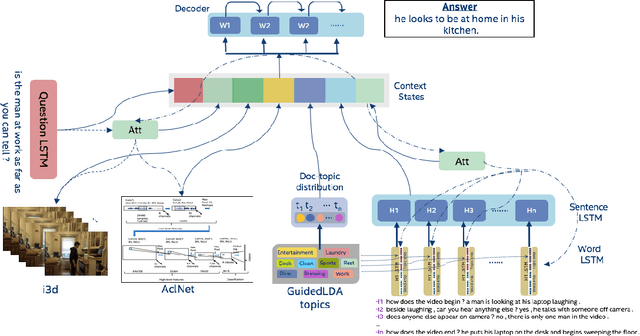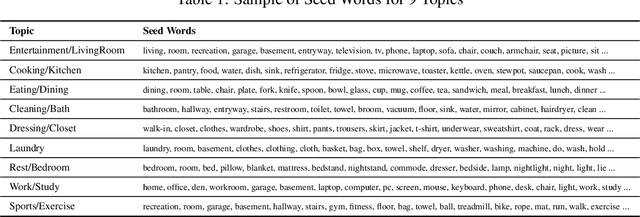Leveraging Topics and Audio Features with Multimodal Attention for Audio Visual Scene-Aware Dialog
Paper and Code
Dec 20, 2019



With the recent advancements in Artificial Intelligence (AI), Intelligent Virtual Assistants (IVA) such as Alexa, Google Home, etc., have become a ubiquitous part of many homes. Currently, such IVAs are mostly audio-based, but going forward, we are witnessing a confluence of vision, speech and dialog system technologies that are enabling the IVAs to learn audio-visual groundings of utterances. This will enable agents to have conversations with users about the objects, activities and events surrounding them. In this work, we present three main architectural explorations for the Audio Visual Scene-Aware Dialog (AVSD): 1) investigating `topics' of the dialog as an important contextual feature for the conversation, 2) exploring several multimodal attention mechanisms during response generation, 3) incorporating an end-to-end audio classification ConvNet, AclNet, into our architecture. We discuss detailed analysis of the experimental results and show that our model variations outperform the baseline system presented for the AVSD task.
 Add to Chrome
Add to Chrome Add to Firefox
Add to Firefox Add to Edge
Add to Edge